Getting Acquainted with Goat
Seventy percent of the red meat eaten around the world is not cow, nor pig, nor lamb. Would you believe it’s goat?
Yet for most of us in the United States, goat merely brings to mind a creamy chevre, and little else.
The prolific food writing duo of Bruce Weinstein and Mark Scarbrough are hoping to rectify that. Their latest cookbook is “Goat: Milk, Meat, Cheese” (Stewart, Tabori & Chang), of which I recently received a review copy. This comprehensive book includes a wealth of information about all things goat, as well as recipes that include “Goat Shanks with Cabbage, Port, and Vanilla,” “Chilled Blueberry Tzatsiki Soup” made with goat yogurt, and “Goat Cheese Brownies.”
They realize that a lot of folks are predisposed to hate goat meat, even if they may never have tried it. So many people fear it’ll be too barnyard-y or funky tasting. But goats that are slaughtered between six and nine months possess none of that. Instead, the meat is slightly earthy and quite tender. Ounce per ounce, goat is also lower in calories, fat and cholesterol than chicken, beef, pork or lamb.
Latin chefs have had a love affair with goat for generations. Nowadays, more and more chefs are discovering how fabulous the meat is and even spotlighting it on pricey tasting menus.
Home cooks can find goat meat at kosher or halal markets, as well as Mexican mercados and specialty butchers. Goat cheese can be found in most any grocery store. And goat butter and goat milk are easily available now at stores such as Whole Foods.
Indeed, that’s where I picked up my goat butter and goat milk for one of the recipes in this book. If you’ve never had goat butter before, it’s quite a revelation. White like vegetable shortening, it is creamy and rich, with a tang like cream cheese, making it rather addicting when spread on toast or bagels. A tablespoon has 110 calories. Goat milk looks just like cow’s milk, but has a very velvety body even though it’s low-fat. With 100 calories per cup, it tastes almost like mild, fresh goat cheese in liquid form.
Both of those ingredients went into Weinstein’s and Scarbrough’s “Baked Spinach-and-Goat-Cheese Dumplings.”
It’s a dish that’s sure to appeal to anyone, even those on the fence about goat. Fluffy, little dumplings are formed from chopped spinach, fresh chevre, aged goat Gouda, egg yolks, chives and semolina flour. A thick white sauce of goat butter, flour, goat milk and dry white wine is poured over the dumplings. A sprinkling of grated aged goat Gouda gets scattered over the top, before the casserole of dumplings is placed in the oven to bake until golden brown.
The dumplings are light, with a wonderful grassy note from the goat cheese that plays well with the minerality of the spinach.
The recipe makes 24 dumplings or four servings. At first glance, I thought six dumplings per person wouldn’t be nearly enough to satiate, even with an ample green salad and crusty bread to round out the meal. But this dish has a real richness to it. So, even though you might fancy more dumplings after that initial heavenly bite, you’ll soon realize that half a dozen is plenty filling.
Learn more about the wonders of goat when Weinstein and Scarbrough visit San Francisco on April 16 for the second annual Goat Fest at the Ferry Plaza Farmers Market, 10 a.m. to 1 p.m.. Yes, that means those adorable baby goats from Redwood Hill Farm & Creamery will be making an appearance again to put everyone in a good mood. Also enjoy samples galore of goat cheese, goat’s milk ice cream, and goat’s milk fudge and caramels.
At 11 a.m., Weinstein and Scarbrough will do a cooking demo, followed by a book signing. At noon, cheese expert Laura Werlin also will host a cooking demo and book signing.
Afterward, Weinstein and Scarbrough will head to Omnivore Books in San Francisco for a goat cheese tasting and book signing from 3 p.m. to 4 p.m.
Baked Spinach-And-Goat-Cheese Dumplings
(Serves 4)
One 10-ounce package frozen chopped spinach, thawed
8 ounces fresh chevre or soft goat cheese, at room temperature so that it’s very creamy
4 ounces hard, aged goat cheese, such as goat Gouda, finely grated and divided
3 large egg yolks
3/4 cup semolina flour, plus more for rolling the little dumplings
1 tablespoon finely minced chives or the green part of a scallion
1 teaspoon salt
1/2 teaspoon finely grated lemon zest
1/2 teaspoon freshly ground black pepper
1/4 teaspoon freshly grated nutmeg
1 tablespoon goat butter (or unsalted cow butter, if you must)
1 tablespoon all-purpose flour
1 cup regular or low-fat goat milk (or cow milk, if you must)
2 tablespoons dry white wine or dry vermouth
First, grab the frozen spinach in small handfuls and squeeze as hard as you can over the sink to get rid of as much excess moisture as you can. Put the bundles in a big bowl and use a fork to separate the spinach back into bits and threads.
Whisk in fresh chevre or goat cheese, half the grated hard goat cheese, the egg yolks, semolina flour, chives, salt, lemon zest, black pepper, and nutmeg. You want a creamy but somewhat stiff mixture, because you’re going to form it into balls.
Sprinkle a little more semolina flour onto a clean, dry work surface. Pick up a little bit of the spinach mixture, a little smaller than a golf ball. Roll this in the semolina flour to form an oblong ball, sort of like a football but without the pointed ends. Set aside and continue rolling more, adding more flour to your work surface as need be (but not too much, or the balls will turn gummy). You’ll end up with about 24 dumplings.
Bring a large pot of water to a boil over high heat. Add 5 or 6 dumplings. Lower the heat so the water barely simmers. Poach for 10 minutes. Use a slotted spoon to transfer dumplings from the pot to a 9-by-13-inch baking dish or an oblong roasting pan. Then add 5 or 6 more dumplings to the pot and repeat the poaching process again — and again — until all the dumplings are done and in the baking dish or roasting pan. Why not just toss them all into the water at once? Because they’ll crowd the pot and stick together. You want enough space so they can bounce around freely in the simmering water.
Position the rack in the center of the oven and preheat oven to 375 degrees.
Melt the butter in a small saucepan set over medium-low heat. Whisk in the all-purpose flour. Whisk over the heat for 30 seconds. Then whisk in the milk in dribs and drabs, a little bit each time to form a paste — and then more at a time, although never more than a slow, steady drizzle. Once all the milk is in the pan, whisk in the wine, raise the heat to medium, and whisk until bubbling and slightly thickened, just a minute or so.
Pour this sauce over the dumpling balls in the baking dish or roasting pan. Sprinkle the remaining grated cheese over the dish. Bake until the sauce is bubbling and just beginning to brown, about 15 minutes. Cool in the pan for 5 minutes before serving.
From “Goat: Meat, Milk, Cheese” by Bruce Weinstein and Mark Scarbrough
More Goaty Goodness: Capricious Goat Cheese
And: One Market’s “Whole Beast” Goat Dinner
Another Bruce Weinstein and Mark Scarbrough Recipe: Shirred Eggs in Prosciutto Crudo Cups
And Another: Maple Blondies
And: Thyme Roasted Shrimp

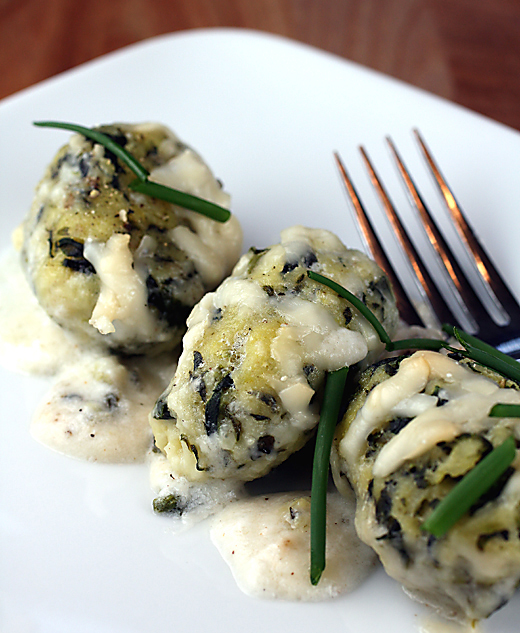
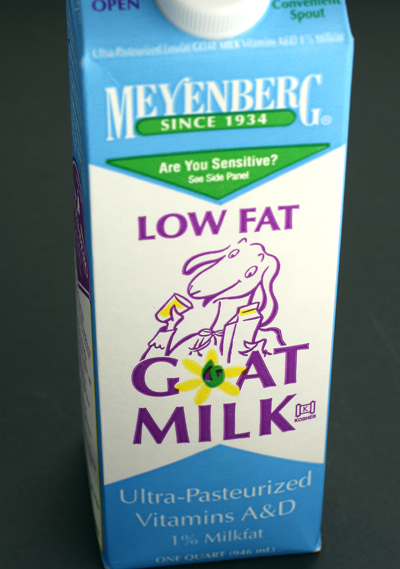
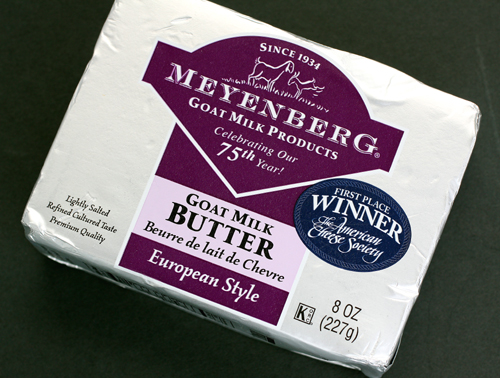
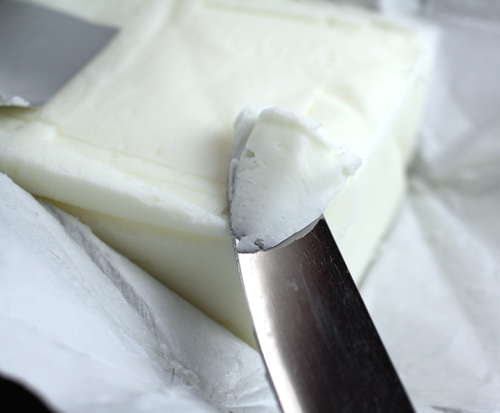
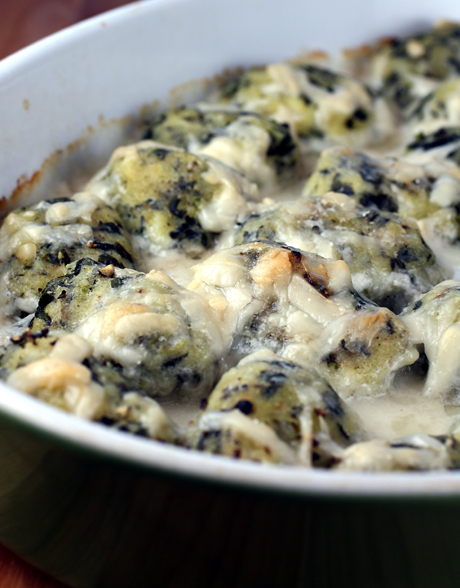
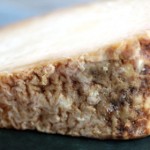
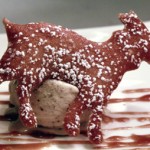
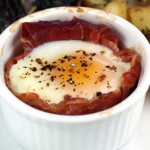
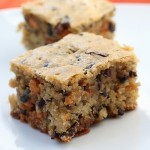
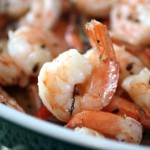
Mmm spinach and goat cheese dumplings sound and look divine! I did try goat’s milk the other day and it was quite pleasant 🙂
I love goat meat for some strange reason but not so much of the cheese or milk 😉 But these dumplings might just be the turning point!
That casserole is fabulous! I really love to cook with goat’s cheese. It is so flavorful.
Cheers,
Rosa
Love goat, in fact I ate goat meat yesterday – was so surprised to find it on the menu – you are right it is rare to find – that I HAD to order it. When I was a baby I could not digest cow’s milk so my Mom gave me goat’s milk…guess it has been love ever since. Don’t get me started on goat cheese….sigh that is pure heaven!
I haven’t had this but it looks good and healthy
This recipe looks delicious. I love goat cheese. Some of my parent’s friends that would babysit us on occasion had goats for milk. They’d give us fresh goat milk and as a kid I can’t say I appreciated it, but I’d love to get some now.
I like goat butter but not sure about the goat milk. Need to try the meat soon. 😉
I like the idea of goat but have to say haven’t cooked with it much. If goat meat is readily available, I think I’d definitely make more of it.
Our meat CSA provides Goat meat. Just got a bunch of goat chops and have several recipes from this book picked to use can’t wait to try them out.
Yum! I can attest they were pretty fine at our house. Can’t get enough goat! But you probably already knew that. Thanks for posting this recipe–and come on down to the goat festival this weekend, everybody.
I’ve never tried cooking goat, but we ate goat stew in Peru and it was quite good. Love the cheese and ice cream, so why not the meat!
Spinach and goat cheese. Two of my favorite things on the planet! Beautiful!
You know, sometimes I get confused – the differences btw goat and lamb.
For me, time to get acquainted too – goat milk, goat cheese and your dumplings etc. ;p
When I lived in Thailand the neighbour’s goats would come over into our garden and eat the tops of pineapples (!) and scraps we threw out so I’m not surprised by that statistic ^_^ These dumplings look lovely.
Pingback: Food Gal » Blog Archiv » Three Summer Reads — That Aren’t Your Usual Cookbooks
Pingback: Food Gal » Blog Archiv » Speedy Chicken Chilaquiles with Less Guilt